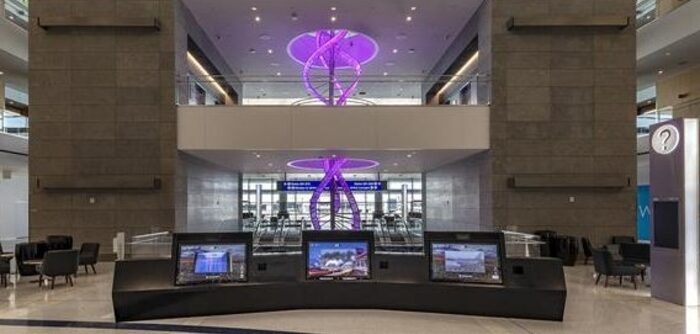Los Angeles Mayor Eric Garcetti has officially opened the Tom Bradley International Terminal at the city’s international airport, LAX, following a US$1.73bn project which has seen the addition of new technology including a checked bag storage system and biometric boarding gates.
“LAX is our gateway to the world — a global crossroads where dreams take flight and where we welcome the future of our city with open arms,” said Mayor Garcetti. “Completing the West Gates is the latest step in our unprecedented campaign to reimagine LAX — to help our airport realize its potential as a premier, 21st century destination, as a source of jobs and economic growth for local workers, and as a site of seamless travel for millions of passengers.”
The five-level, 15-gate, 750,000ft2 facility, which will serve both international and domestic flights, is the latest step in the airport’s US$14.5bn modernization. At nearly 1,700ft in length, the new terminal is located just west of the existing international terminal and was constructed over the course of four-and-a-half years.
According to the airport, the new gates were designed around a modern, digitally based travel experience and offer numerous seating options, with thousands of places to plug in devices, while giving travelers access to next-generation wireless internet, touchscreen kiosks and an advanced baggage handling and boarding system.
“This project sets the standard for how to build better, providing meaningful work opportunities to local workers and small businesses, keeping sustainability at the heart of the project and focusing on providing the best passenger experience possible,” said Sean Burton, president, Los Angeles Board of Airport Commissioners (BOAC). “More than 8,500 individuals, 30% of which came from the local community, had an integral role in building this state-of-the-art facility over the course of 1.4 million work hours.”
Construction began on the new gates in late 2016. A joint venture between Turner Construction and PCL Construction served as the contractor, in association with architects Corgan and Gensler. The project was funded from LAX’s operating revenues, Capital Improvement Program funds, fees from airlines, passenger facility charges and airport revenue bond proceeds.


